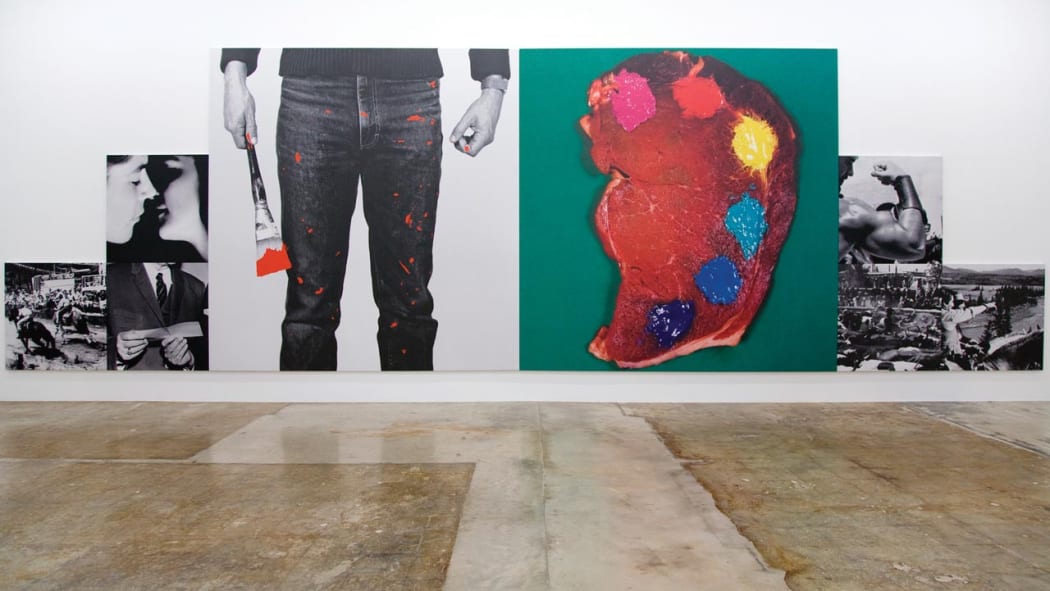
Stake: Art is Food for Thought and Food Costs Money, 1985 black-and-white photographs, color photograph, and acrylic paint on canvas 144 x 480 in. (365.8 x 1219.2 cm). Acquired in 2006 by Rubell Collection Miami.
John Baldessari was an influential American artist, born on June 17, 1931, in National City, California, and passed away on January 2, 2020, in Los Angeles. He played a central role in the development of conceptual art in the United States, particularly known for his work involving altered and adjusted photographic imagery and video.
Baldessari's initial artistic explorations were in painting, but by the mid-1960s, he began incorporating texts and photography into his canvases, marking a significant shift in his work. His early major works were canvas paintings that often featured text derived from contemporary art theory, presented in a commercial, lifeless style to focus the viewer's attention on the text without distractions. Notably, in 1970, as part of a new piece titled "The Cremation Project," Baldessari burned all the paintings he had created between 1953 and 1966, turning the ashes into cookies placed into an urn, accompanied by a commemorative plaque. This act symbolized a turning point in his artistic practice.
Baldessari is renowned for his works that juxtapose text with images, often blending photographic materials like film stills with words or sentences. This approach was evident in his "Wrong" series (1966-1968), where he paired photographic images with lines of text from an amateur photography book. Another notable work was the "California Map Project" (1969), where he created physical forms resembling the letters in "California" on the map at locations corresponding to where they were printed.
Throughout his career, Baldessari engaged in various artistic experiments and thematic explorations. His interest in language and its structural similarities to games was a recurring theme. For example, his work "Throwing Three Balls in the Air to Get a Straight Line" (1973) was an exercise in achieving an arbitrary goal, emblematic of his playful and experimental approach.
Baldessari's teaching career was also significant. He taught at the California Institute of the Arts (CalArts) and the University of California, Los Angeles, influencing generations of emerging artists. His students included notable figures such as David Salle, Eric Fischl, Tony Oursler, and Mike Kelley.
In his later career, particularly from the mid-1980s onward, Baldessari became known for his "dot portraits," where circular adhesive dots were used to cover faces in photographed and painted portraits, adding a layer of anonymity and abstraction to these images.
John Baldessari's work has been celebrated for its innovative and critical approach to art, contributing significantly to the conceptual art movement and leaving a lasting impact on the art world.
How John Baldessari influenced the Cuban Artist Raúl Cordero.
wo artists linked by a great friendship, source of inspiration for Raul Cordero himself. In John Baldessari’s work, phrases in italic are constantly repeated like stolen from a student's notebook. A manifesto-work that invites to think about the meaning of art in years of crisis. Raul is inspired by this "manifesto" and from their great friendship he asked himself the same question, is it still possible not to make boring art?
Whether you're interested in art education, exhibitions, events, talks, new artworks or anything in between, our newsletter has something for everyone. So don't miss out – sign up today and join the community of savvy subscribers who stay ahead of the curve!

